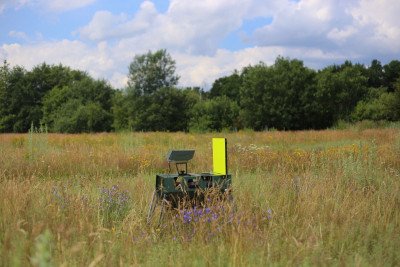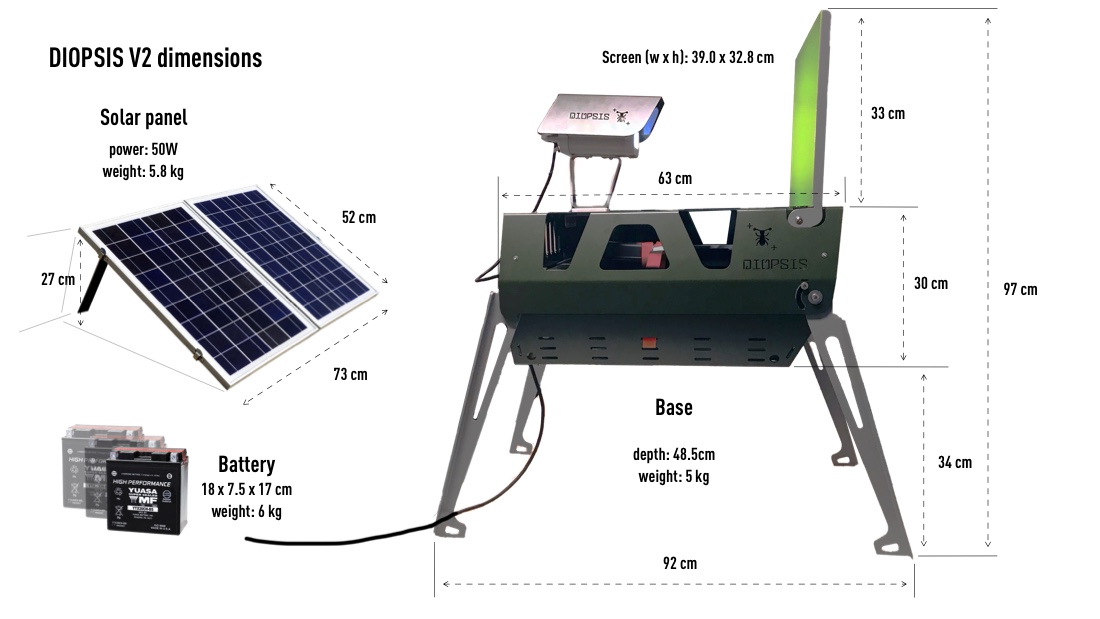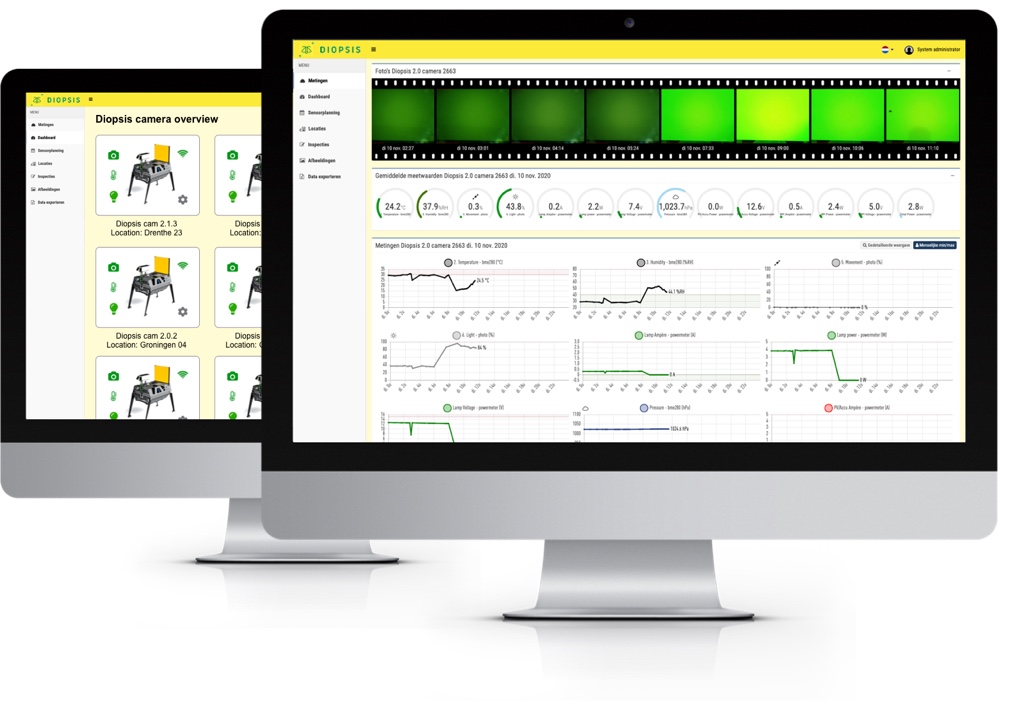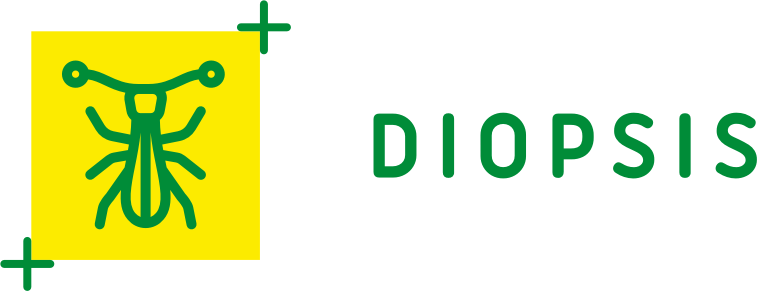Camera
The insect camera is a digital camera with software designed and built specifically for DIOPSIS. Insects are attracted to the yellow screen and are photographed as they sit on the screen. The camera takes pictures day and night when motion is detected. To photograph in the dark, LED lights are built in. Via 4G, the photos are sent to a server. The DIOPSIS camera is developed and sold by Faunabit B.V.

Yellow screen
Vhe many flying insects are attracted to certain colors. Preferred colors (e.g., white, yellow, blue) vary from species to species. The color yellow attracts the most insects. Attractiveness is further enhanced by applying ultraviolet coating to the screen. For additional attraction in the dark, LEDs are used. To prevent insects from sitting on the back of the screen, it is dull green. In addition to vertical, the camera can also be set up horizontally. Comparisons of two setups side by side, one with a vertical screen and one with a horizontal screen, show that a horizontal screen attracts more insects during the day. These insects are often pollinators who like to land on something.

Power supply
The camera operates on 5V electricity. This can be supplied via mains power (220V) or a solar panel/battery (12V).

Insect camera web portal
Faunabit's DIOPSIS web portal allows users to monitor their insect cameras. The portal provides access to the photos taken by the insect camera and also shows live various measurements the insect camera takes, such as temperature and ambient light levels.
For more information about the DIOPSIS insect camera and ordering options, please visit the website of Faunabit.
For general information about the DIOPSIS project and image recognition, please contact Chantal Huijbers (project leader) or Tamara de Reus (project assistant) at Naturalis Biodiversity Center: diopsis@naturalis.nl.
